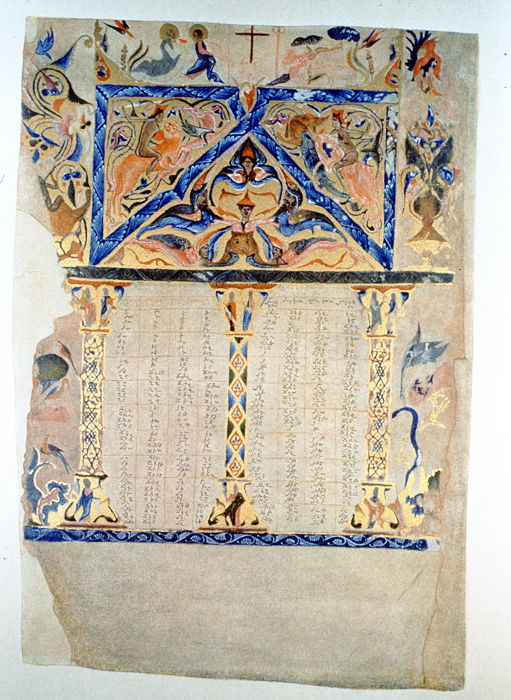Miniature, the art of decorating manuscripts, has its special place in Armenian art, the infinity of which is not wholly discovered yet. Here Armenians’ characteristic features of artistic thinking, aesthetic perception, imprint of interaction with cultures of different countries and great love towards beaty have been expressed. The examples of Armenian miniature are spread in all over the world. Some part of them is exhibited in the most famous museums and libraries, another part is unknown. The greatest part of Armenian medieval manuscripts – more than 11000 – is preserved in Matenadaran after Mesrop Mashtots, in the depository of Armenian manuscripts. The art of miniature of Cilician Armenia, which especially flourished in the 13th century, has its special place in the history of Armenian miniature. Cilician miniatures are rich in diversity, abundance and gracefulness of images and ornaments, The Gospel number 9422, which is saved in Matenadaran, is incomparable among Cilician manuscripts. This is one of those numerous manuscripts, which were saved from the Armenian Genocide by a miracle. The Gospel was brought to Armenia from Moush by Armenian migrants. The manuscript is not dated concretely, but it was written and illustrated in the second half of the 13th century, in Cilicia.
With its high art of miniatures, decency and gracefulness of images, harmony of graphic design and colors, this manuscript is a unique treasure in the history of Armenian miniature. The initial images of the manuscript are images of altars, then there are thematic miniatures, Evsebios’s epistle to Karpianos, and in the end, the images of four evangelists. The most important in the Gospel is the passage of “Annunciation”, when the archangel Gabriel announces Jesus Christ’s birth to Maria.
In the history of the Armenian miniature there is no other manuscript with such poetic, refined, graceful and attractive images as the images of Virgin Mary and the archangel, where colors and Cilician gold are united so harmoniously and where each fraction of miniature is perfect. The altars of the manuscript are interesting, too. Especially the fantastic figures composed of human heads, the capitals and pedestals of columns representing different persons from the Bible are amazing. The views of hunting and fight between animals are extremely attractive. They reflect the palace life of Cilician kings and princes. With the high degree of miniature-drawing, executive art and artistic qualities this manuscript is a real diamond among the valuable treasures of Matenadaran.











